Opinion
Protecting Local Languages From Extinction
Researchers say that language loss occurs when the language has no native speakers and automatically becomes a “dead language”. For the Nigerian ethnic languages, the picture is grim and worrisome as younger generations become incapable of speaking their native languages, because most of our local languages are obviously one of the endangered languages. Languages are not just a means of communication, but a medium of conveyance of the culture and history of indigenous peoples. When languages go into extinction, humanity loses not only cultural wealths but also an important ancestral knowledge embedded in particular indigenous languages. No one can preserve the culture, nor tell the story of a people more than the people themselves, using their indigenous languages.The introduction of English language by the colonial masters as a facilitating agent of colonialism produced multifarious challenges to African languages, especially in the Nigerian sphere.
Though the English language may appear more advanced, versatile and sophisticated, having evolved over the centuries, it lacks the requisite lexicons for perfect translations of most indigenous communications. It therefore becomes a challenge to tell indigenous stories in a foreign language. The clash of the English language and culture with the local languages and cultures, as colonialists invaded African communities, made the English language dominate local languages in several ways. Though the colonialists made efforts to develop alphabets using local phones, and to script the local languages in Nigeria, English remained the official language standard in education, civil and religious endeavours. In their limited knowledge of the variants of local languge phones the colonialists created some distortions of local translations and scripts, which remain to be corrected, while the locals in trying to cope with the new language blended local languages with English to create corrupt variants of English now called the Pidgin English.
While the colonialists continue in their true language, leaving the locals to fumble with pidgin according to their levels of education, it remains the responsibility of local communities to advance their languages from where the colonialists had stopped, bearing in mind that the native language is the only perfect means of preserving indigenous cultures and identities. Abandoning native languages for ready-made foreign languages, is an easy way to wipe-off cultural heritages, and kill local histories and the knowledge they convey.It is therefore a thing of concern that 63 years after colonial independence, no single local language from the numerous ethnicities in Nigeria is considered a Nigerian official language, rather than the colonialist’s language, the English language, even with the consideration to add French. How then do we build nationhood? The populations of most ethnic peoples in Nigeria are more than the population of most advanced countries who have promoted their languages around the world, yet we allow ours to stand inferior.
The situation has come to a height where concerned indigenous people begin to express fears that their languages may go into extinction within the foreseeable future. The fear became more pronounced when in the year 2012, United Nations Educational Cultural and Scientific Organisation (UNESCO) predicted that half of the 7,000 plus languages spoken around the world, including specific Nigerian languages, will become extinct if nothing was done to save them. Already the colonial invasion of Nigeria in the nineteenth century, aside from some of its benefits, suppressed many ethnic civilisations to the point of extinction. Today, the descendants of the Kanen-Bornu, Nri, Nok, Benin, Oyo and Ife, kingdoms hear stories of their histories and identities as folklores, recorded and told in a foreign language, and mostly documented and told by foreigners.In some cultures, the loss of a way of life, through the dismantling of ethnic norms and the forceful fusion of nationhood by the British colonialists without the express consent of the entities involved, introduced deeply flawed arrangements that effectively confused and corrupted local democratic spirits.
Nigeria was set-up as nation under a name given by foreigners, set-up on borrowed constitution, a borrowed justice and governance system. According to Chinua Achebe, in his book, ‘There Was A Country,’ “Africa’s post-colonial dispossession is the result of a people who have lost the habit of ruling themselves.”By nature, Nigerian ethnicities were remarkably creative, egalitarian, resourceful, resilient, adventurous and progressive, though without the sophistication of writing skills and advanced learning institutions. Current cultural trends in Nigeria have become mostly propelled in English or in its local variant of Pidgin, in ways that lose connections with the roots of our communities that the creative message and essence is mostly lost. Indigenous peoples should borrow superior advancements from other cultures while preserving that which is precious in theirs, and convey emerging trends in their various languages. After all, all cultures and languages borrow from one another to advance in versatility and trend.
In Nigeria, some parents have become so disconnected from their local cultures that names of children are now outlandish, inspired by names of popular actors and actresses from foreign movies, with no bearing on local meanings. Some children now have first names and surnames that give no hint of their ancestral nor ethnic identity, and some even give their children names like Golden, Prevail, Marvelous, Precious, etc, words which are either verbs or adjectives.To advance our languages, government should promote the use of local languages in schools and in religious and social gatherings. Study text books, in various subjects, should be produced in the local languages. Efforts should be made to develop and widen the lexicons of our local languages to give local expressions for emerging terms in arts, science, mathematics, sports, commerce, technology, tools and appliances, as well as in religious and political discussions. Traditional rulers, as true custodians of the various cultures, should see to it as a duty to propagate their languages by promoting communications in indigenous langauages but not by holding unto unprogressive observances.
By: Joseph Nwankwor
Opinion
Fighting Insecurity: Shagari’s Model
What we see across the country today can only be surmounted through a decisive Presidential agenda devoid of politics and sentiments. Alhaji Shehu Shagari, faced with similar security threats, wasted no time in restoring order.
Shagari was still in his first year in office when Islamic fundamentalists, led by Muhammadu Marwa, better known as Maitatsine, visited terror on Kano. Domiciled in the Yan Awaki area, the man who originally hailed from Cameroon, began to create an empire of terrorists.
Kano was under the control of the Peoples Redemption Party (PRP) while the National Party of Nigeria ( NPN) controlled the Federal Government. Shagari, a Muslim, did not want to be politically correct because Kano was involved. He placed national security above everything else.
Realising that the terrorists had overwhelmed the police, killing about 100 of them including a Commissioner who was moved from Aba, the president applied military force. It took just two days for soldiers to crush Maitatsine and his followers. At the end, 5,000 civilians died and the Army lost 35 souls.
That was in 1980. Shagari set up a Judicial Commission headed by Justice Anthony Aniagolu. Hundreds of the trouble makers were sent to jail. And it turned out that among them were fighters from Chad, Niger Republic, Cameroon, Burkina Faso and Mali.
On May 16, 1981, there was a skirmish at the Nigeria – Cameroon frontier. Second Lieutenant Seyiveh Sewhenu Amosu of the Nigerian Army, leading a patrol on the Akpa Yafe River, was killed in an ambush by Cameroonian forces. Four other soldiers, Felix Bemigho, Emmanuel Kasar, Joseph Imaja and Emmanuel Akpan also died.
Shagari wasted no time in showing Cameroon the power of Nigerian forces. His Service Chiefs had tasted battle during the Civil War. Chief of Defence Staff, Gibson Jalo, was a General Officer Commanding (GOC). Army Chief, Mohammed Wushishi, was part of the First Division, Chief of Naval Staff, Akin Aduwo, commanded a warship, his Air Force counterpart, Dominic Bello, was one of the few Federals that flew jet bombers.
The world watched as Nigerian forces moved to the border for war on Cameroon, whose troops had never seen battle anywhere. Having frightened the aggressor, Shagari diplomatically halted the planned assault.
In October 1982, some of Maitatsine’s loyalists, regrouped in Bulunkutu, Maiduguri. Among them were many released from jail, like what we see with Boko Haram fighters today. They burnt mosques, churches and humans, using body parts as charm. Again, Shagari acted decisively to decimate the terrorists.
On April 18, 1983, one Idris Debby, led Chadian troops to seize 21 Nigerian fishing villages. Shagari showed his stuff, once again. As Commander – in – Chief of the Armed Forces, he chose seasoned fighters, after consulting with his Defence Team.
Muhammadu Buhari, GOC of the 3rd Amoured Division was given the task of clearing the intruders. As the first governor of Borno State, the general knew the terrain so well. His mother was Kanuri, whose people knew much about Debby and the Zaghawa.
To support Buhari, Chris Ugokwe, a seasoned warrior and Commander of the 21 Armoured Brigade, led the battle. Ugokwe commanded Biafra’s 52 Brigade during the Civil War and was the officer who led 13 Armoured vehicles, under Ibrahim Babangida in 1976, to flush Bukar Dimka out of Radio Nigeria.
Ugokwe and Buhari were friends and Nigeria Military Training College (NMTC) course 5 mates. Babangida was their junior by one Course. It was because of Biafra that Ugokwe lost seniority but he was trusted by PMB and IBB. Ugokwe and Babangida were together in Kaduna during the January 15, 1966 coup.
Ugokwe drove Debby out of Nigeria and led troops into Chad. To show the strength of his Brigade, he planned to capture Ndjamena and was going to accomplish that task when Shagari, again, turned to diplomacy. The president called on Buhari to stop his troops.
That war with Chad gave the Armed Forces so much respect. The Air Force had men like Ben Ekele and Adamu Sakaba. Ekele was so good in all his training abroad that he was nicknamed ‘Air Hooligan’. His friend, Isaac Alfa, was known as ‘Air Warrior’.
Ekele played with the MiG fighter jets, like a toy. Some admirers gave him another name, ‘Ben The MiG’. Unfortunately, the officer was executed with Sakaba, in March 1986. Both were found guilty of treason by the Charles Ndiomu Military Tribunal, for their alleged roles in the Mamman Batss plot of 1985.
Shagari pushed our best into battle. Second Lieutenant Amosu, who was killed by Cameroonians, belonged to the Nigerian Defence Academy Regular Course (RC) 22. That RC later produced a Chief of Naval Staff, Dele Ezeoba, a governor, Inua Bawa, a Senator, Austin Akobundu and other prominent officers like Brigade of Guards Commander, J. O. Shoboiki, Task Force Commander, Sarkin Bello and Paul Izukanne. Another Amosu, Nunayon, became Chief of Air Staff.
President Bola Tinubu should follow Shagari’s footsteps. Nigeria is in trouble and there must be no consideration of tribe, tongue or party. Our Armed Forces can do better. We have many saboteurs in and out of power. What is paramount now is a new strategy.
The bloodletting is unprecedented. Citizens are slaughtered like chicken, daily all over the country. We call them bandits, in the North – West, killer herdsmen in the North – Central, terrorists in the North – East and Fulani herdsmen, in the entire South.
There is only one President and Commander – in – Chief. Tinubu is a strong man, cowardice is not part of his profile. He was part of the NADECO battalion that waged war on Sani Abacha. This is another war. Tinubu can and must fight like a Field Marshal.
Emeka Obasi
Obasi is an online journalist and analyst.
Opinion
Flood Disaster In Nigeria: Predictable Tragedy
Each year, Nigeria is struck by a disaster that has become so routine it barely shocks the national conscience anymore: devastating floods that displace thousands, destroy livelihoods, and cost the country billions in damages. From Lagos to Lokoja, Borno to Bayelsa, the story is the same—swollen rivers, submerged homes, lost farmland.
Children drop out of school as their homes or schools are flooded. Health crises follow, as stagnant water breeds Cholera and other waterborne diseases. Women and children bear disproportionate burdens, from increased caregiving duties to heightened vulnerability in overcrowded displacement camps.
Just last week, the country woke up to another flood disaster. Mokwa, a commercial hub in Niger State was swept away. About 200 lives were lost, 3,000 people were displaced, bridges washed away, families left heart broken.
The painful thing is that the meteorological agencies, the Nigeria Hydrological Services Agency (NIHSA) and Nigerian Meteorological Agency (NiMet) usually issue annual warnings about impending floods but little or nothing will be done by both the authorities and the citizens to avert the disaster until it happens and everybody starts running helter skelter. At a press conference in Abuja on Tuesday, June 3, the Minister of Water Resources and Sanitation, Joseph Utsev, clearly stated that flood warnings were given but they were not adhered to.
Speaking against the speculations that Mokwa flood was caused by the release of water from Kainji and Jebba Dams, he said, “Nigerians would recall that the Federal Ministry of Water Resources and Sanitation through the Nigeria Hydrological Services Agency in the 2025 Annual Flood Outlook on the 10th of April, 2025 predicted flooding in 19 LGAs of Niger State including Mokwa LGA.”
He also referred to the report of 2025 AFO, which indicated that 1,249 communities in 176 Local Government Areas in 33 States and the FCT fall within the High Flood Risk Areas, while 2,187 communities in 293 LGAs in 31 States, including the Federal Capital Territory, fall within the Moderate Flood Risk Areas.
Indeed, the floods in Nigeria are no longer unpredictable phenomena. Reports have it that in 2022, for example, over 600 lives were lost, 1.4 million people displaced, and over 200,000 homes damaged.
Crop-lands were washed away, leading to spikes in food prices and food insecurity. Infrastructure—already fragile—was further crippled. Subsequent years had similar reports. And yet, each year, State governments and citizens alike act surprised when the waters rise.
The causes of these floods are not mysterious. Climate change plays a role, with increasingly intense rainfall and rising sea levels. However, much of the devastation has been traced to human failings: poorly planned urban development, inadequate drainage systems, deforestation, and the mismanagement of river basins and dams.
For instance, the release of water from Cameroon’s Lagdo Dam annually inundates many States across the country, especially when the Dasin Hausa Dam, meant to contain the excess flow, remains incomplete decades after it was conceptualised. Similarly, urban expansion in many cities of the country often encroaches on natural floodplains and wetlands, replacing them with concrete that prevents water absorption and channels run-off into homes and roads.
Experts have claimed that at the heart of the flood disaster in the nation lies a deeper governance problem. Environmental policy is fragmented, implementation is weak, and coordination between federal, state, and local governments is almost non-existent. Flood response is often reactive—focused on rescue and relief—rather than preventive. Agencies like the National Emergency Management Agency (NEMA) and State Emergency Management Agencies (SEMAs) are underfunded and overwhelmed. There is no better truth.
How many government agencies whose job is to prevent floods and other disasters do their jobs? Just like past floods in Nigeria, Mokwa flood has been largely attributed to unregulated buildings and construction activities, poor drainage infrastructure and the likes. And the question is, whose responsibility was it to ensure that these illegal buildings were not erected in the first place? Whose duty is it to ensure that refuse is disposed of properly and that defaulters are punished?
Of course, citizens are not to be exonerated from the blame. Many Nigerians find it difficult to obey rules. Many care less about the environment and they will be the first to cry woes when a disaster occurs. But the point remains that if the regulatory authorities do not wake up to their duties of ensuring that people comply with building codes and urban development guidelines, if they would rather collect money from developers and look the other way when water channels are covered with buildings, then, the floods so far seen might just be a child’s play.
It is high time the governments at all tiers and across all levels stopped seeing floods as seasonal inconveniences rather than existential threats. These authorities are quick to make promises in the aftermath of a flood, but once the waters recede, so does the urgency. Reports are written, funds are pledged, but structural action is rare. The cycle continues: warnings, inaction, disaster, aid appeals, and then silence—until the next year. How can this help the situation?
There is an urgent need for the completion of the Dasin Hausa Dam project in Adamawa State. Experts say that this dam, if functional, would serve as a buffer for the Lagdo Dam releases from Cameroon. The same goes with the need for rehabilitation and expansion of the country’s drainage systems, especially in urban centres. Most existing systems are outdated, clogged, or simply inadequate for today’s volume of rainfall.
Building codes and urban development guidelines must be enforced without compromise. State governments must stop the unchecked development on floodplains and demolish illegal structures that obstruct natural drainage. New developments must include adequate drainage systems, and environmental impact assessments must be mandatory and rigorously enforced.
Government should carry out resettlement programmes for people living in high-risk zones. It is not enough to announce that people living along river banks and flood prone areas should move to higher lands. Are provisions made for them to move and to settle on higher lands?
Also, early warning systems must go beyond press releases and scientific bulletins. They must translate into community-level awareness and preparedness. NEMA and SEMAs should partner with local governments, traditional institutions, and civil society to educate the public on flood risks and evacuation plans.
Community-based disaster response teams can be trained and equipped to act swiftly when floods occur. More importantly, simulations and drills should be conducted periodically, not just after disasters strike.
It is also important that the government, both state and federal, collaborate with the private sector to introduce subsidised flood insurance scheme, especially for farmers and small business owners who bear the brunt of flood damages.
Climate change is no longer an abstract threat; it is a daily reality. Federal and state governments must integrate climate resilience into all development policies. Ministries of Environment, Works, Water Resources, and Agriculture must collaborate to build climate-smart infrastructure.
This also includes reforestation projects, sustainable agriculture practices, and policies to reduce carbon emissions. Nigeria’s national climate adaptation plan must be updated and fully implemented, with budgetary allocations that reflect the seriousness of the problem.
Transparency in the use of emergency funds and infrastructure budgets is essential. Anti-corruption agencies should investigate diversion of funds meant for disaster preparedness and flood mitigation.
Nigeria’s flood disaster is now a national emergency that requires urgent, collective, and sustained action. We can no longer afford the complacency that treats annual floods as inevitable. The science is clear, the patterns are consistent, and the solutions are known. What is missing is the will to act.
A flood-resilient Nigeria is possible. It begins with planning, continues with investment, and is sustained by accountability. We must break the cycle of annual disaster and move toward a future where the rainy season is a blessing, not a curse.
President Bola Tinubu must be commended for approving the release of ?2 billion, 20 trucks of rice for victims. That will go a long way in helping them if they are not diverted by those in the chain of their release and distribution.
Calista Ezeaku
Opinion
AI And Transformation of Nigeria’s Education
The increasing advent of technology is slowly, but evidently taking over major sectors in the world today, but not so much in Nigeria. Education is the backbone of any country, especially if it is one that hopes for the better future of its youths and the growth of the country at large.
Despite the known fact that education is key to national development, Nigeria’s education sector seems to be buckling under pressure ranging from a limited access to quality learning resources, poor school infrastructure, and overcrowded classrooms, among others.
It does not end there as many educators lack the digital literacy to properly use these tools. Proper strategies, digital literacy training and a focus on providing proper infrastructure in schools are the barriers that need to be tackled to surmount this challenge. Addressing these issues first would pave way for Artificial Intelligence (AI) integration in schools.
Though, AI is more than technical jargon, it just might be what Nigeria needs to level the playing field, especially since it looks like we are being left behind with all the innovation technology has brought along. With its personalised features, teachers can tailor lesson plans based on each student’s weaknesses which would positively affect learning outcomes. Imagine a school in Kano, where students learn English through AI-powered applications and resources. It would give better opportunities for the teacher to have more time to give them more personal attention.
However, to fully realise these benefits, there are certain underlying issues that AI can easily tackle, especially those in rural areas, where there is lack of electricity, proper ICT tools, and internet connectivity.
A United States based publication, EdTech, noted that there is an increasing strain in the ability of teachers to carry out their occupational demands with planning lessons, meeting parents and guardians, and other administrative responsibilities.
However, according to Carnegie Learning, teachers who have embraced AI have seen notable changes in students’ outcome and their work flow. In their research, 42 per cent found out that using AI reduced time spent on administrative duties, 25 per cent noted that AI was particularly useful in assisting with personalised learning, and 18 percent of them reported an increase in students’ engagement. Only one percent could report no change at all with the use of AI in the classroom.
Notably, the United Nations Educational, Scientific and Cultural Organisation (UNESCO), highlighted the potential of AI to address challenges in education, and its ability to innovate teaching and learning, as long as it is deployed safely and ethically. This connotes that every good innovation has a negative downside, and Artificial intelligence is not without.
According to UNESCO, well thought out strategies to maximise the use of AI in classrooms is what our education sector needs. I believe that as a nation we need to set policies that are channelled towards AI integration into the education system, and more importantly, all hands should be on deck to facilitate its process.
Teachers as well as students have a role to play in ensuring that it is not misused and rendered a vice. If we do not integrate AI soon enough, the learning gap between Nigeria and other nations will continue to widen, as it is already the case for most sectors of the country. This gap would not only widen, but it would go on to affect our youths who will be left behind in the global workforce.
Though, schools are known to be institutions of socialisation, where teachers play a major role in shaping the minds and outlook of the students in the classroom, I do not see AI as a replacement for teachers and evidently cannot take the job of educators. Additionally, the World Economic Forum noted that while AI can enhance the learning processes, it cannot replicate the human element that is needed by every student – that which is provided by teachers.
Therefore, AI is not a threat to teachers; rather it is a partner that benefits not just the teachers, but the students as well. It is important that policy makers move to develop and implement policies that integrate AI into the education system in Nigeria. The earlier we embrace this innovation, the better it will be for the future of every child.
Eniola Shobiye
Shobiye, a student, writes from the University of Ilorin.
-

 News5 days ago
News5 days agoEx-president Buhari donates cow, rice to corps members in Daura
-
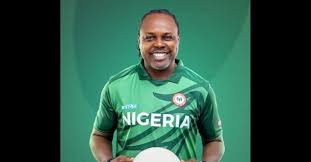
 Sports5 days ago
Sports5 days agoIkpeba Football Challenge Final Holds,’Morrow
-
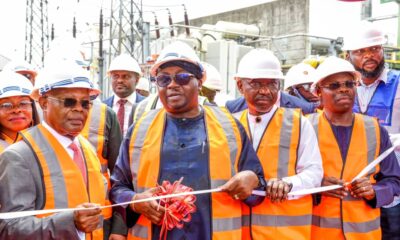
 City Crime5 days ago
City Crime5 days agoDemocracy Day: Tinubu Addresses Joint N’Assembly Today
-
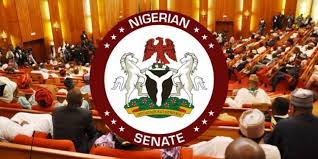
 News5 days ago
News5 days agoSenate Moves To Institutionalise June 12 Presidential Address
-
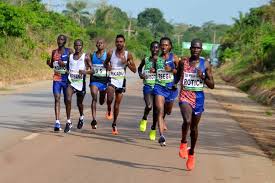
 Sports5 days ago
Sports5 days agoOkpekpe 10km Road Race Returns Next Year
-
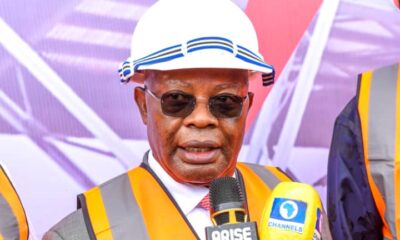
 News5 days ago
News5 days agoIbas Presents ?1.48trn Rivers 2025 Budget To Reps, Laments Sabotage
-
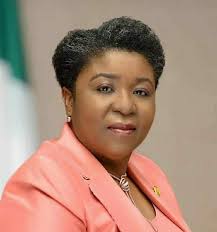
 News5 days ago
News5 days agoFG Working Towards World-Class Public Service -Walson-Jack
-

 Sports5 days ago
Sports5 days agoTeam USA Booed After Another Whipping

